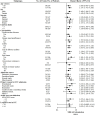Colonization With Extensively Drug-Resistant Acinetobacter baumannii and Prognosis in Critically Ill Patients: An Observational Cohort Study
- PMID: 33996866
- PMCID: PMC8119758
- DOI: 10.3389/fmed.2021.667776
Colonization With Extensively Drug-Resistant Acinetobacter baumannii and Prognosis in Critically Ill Patients: An Observational Cohort Study
Abstract
Background: Acinetobacter baumannii is one of the most frequently isolated opportunistic pathogens in intensive care units (ICUs). Extensively drug-resistant A. baumannii (XDR-AB) strains lack susceptibility to almost all antibiotics and pose a heavy burden on healthcare institutions. In this study, we evaluated the impact of XDR-AB colonization on both the short-term and long-term survival of critically ill patients. Methods: We prospectively enrolled patients from two adult ICUs in Qilu Hospital of Shandong University from March 2018 through December 2018. Using nasopharyngeal and perirectal swabs, we evaluated the presence of XDR-AB colonization. Participants were followed up for 6 months. The primary endpoints were 28-day and 6-month mortality after ICU admission. The overall survival rate was estimated by the Kaplan-Meier method. We identified risk factors associated with 28-day and 6-month mortality using the logistic regression model and a time-dependent Cox regression model, respectively. Results: Out of 431 patients, 77 were colonized with XDR-AB. Based on the Kaplan-Meier curve results, the overall survival before 28 days did not differ by colonization status; however, a significantly lower overall survival rate was obtained at 6 months in colonized patients. Univariate and multivariate analysis results confirmed that XDR-AB colonization was not associated with 28-day mortality, but was an independent risk factor of lower overall survival at 6 months (HR = 1.749, 95% CI = 1.174-2.608). Conclusions: XDR-AB colonization has no effect on short-term overall survival, but is associated with lower long-term overall survival in critically ill patients.
Keywords: Acinetobacter baumannii; colonization; extensively drug resistant; infection; intensive care unit.
Copyright © 2021 Zheng, Xu, Pang, Han, Yang, Qin, Zhang, Li, Wang and Chen.
Conflict of interest statement
The authors declare that the research was conducted in the absence of any commercial or financial relationships that could be construed as a potential conflict of interest.
Figures


Similar articles
-
Extensively drug-resistant Acinetobacter baumannii in a Lebanese intensive care unit: risk factors for acquisition and determination of a colonization score.J Hosp Infect. 2016 Jan;92(1):47-53. doi: 10.1016/j.jhin.2015.10.007. Epub 2015 Nov 2. J Hosp Infect. 2016. PMID: 26616413
-
Clinical epidemiology, treatment and prognostic factors of extensively drug-resistant Acinetobacter baumannii ventilator-associated pneumonia in critically ill patients.Int J Antimicrob Agents. 2016 Nov;48(5):492-497. doi: 10.1016/j.ijantimicag.2016.07.007. Epub 2016 Aug 12. Int J Antimicrob Agents. 2016. PMID: 27542315
-
The effect of temporary closure and enhanced terminal disinfection using aerosolized hydrogen peroxide of an open-bay intensive care unit on the acquisition of extensively drug-resistant Acinetobacter baumannii.Antimicrob Resist Infect Control. 2020 Jul 14;9(1):108. doi: 10.1186/s13756-020-00772-z. Antimicrob Resist Infect Control. 2020. PMID: 32665037 Free PMC article.
-
Treatment outcomes of patients with non-bacteremic pneumonia caused by extensively drug-resistant Acinetobacter calcoaceticus-Acinetobacter baumannii complex isolates: Is there any benefit of adding tigecycline to aerosolized colistimethate sodium?Medicine (Baltimore). 2018 Sep;97(39):e12278. doi: 10.1097/MD.0000000000012278. Medicine (Baltimore). 2018. PMID: 30278498 Free PMC article.
-
A Systematic Review of the Burden of Multidrug-Resistant Healthcare-Associated Infections Among Intensive Care Unit Patients in Southeast Asia: The Rise of Multidrug-Resistant Acinetobacter baumannii.Infect Control Hosp Epidemiol. 2018 May;39(5):525-533. doi: 10.1017/ice.2018.58. Epub 2018 Mar 27. Infect Control Hosp Epidemiol. 2018. PMID: 29580299
Cited by
-
The challenges of difficult-to-treat Acinetobacter infections.Clin Microbiol Rev. 2024 Dec 10;37(4):e0009324. doi: 10.1128/cmr.00093-24. Epub 2024 Nov 18. Clin Microbiol Rev. 2024. PMID: 39555919 Review.
-
Antibacterial Activity of Medicinal Plants and Their Constituents in the Context of Skin and Wound Infections, Considering European Legislation and Folk Medicine-A Review.Int J Mol Sci. 2021 Oct 4;22(19):10746. doi: 10.3390/ijms221910746. Int J Mol Sci. 2021. PMID: 34639087 Free PMC article. Review.
-
IgYs: on her majesty's secret service.Front Immunol. 2023 Jun 12;14:1199427. doi: 10.3389/fimmu.2023.1199427. eCollection 2023. Front Immunol. 2023. PMID: 37377972 Free PMC article. Review.
-
An integrative review on the risk factors, prevention, and control strategies for carbapenem-resistant Acinetobacter baumannii colonization in critically ill patients.Front Microbiol. 2025 Jan 10;15:1519906. doi: 10.3389/fmicb.2024.1519906. eCollection 2024. Front Microbiol. 2025. PMID: 39867493 Free PMC article. Review.
-
Analyzing Clinical Parameters and Bacterial Profiles to Uncover the COPD Exacerbations: A Focus on Intensive Care Unit Challenges.Medicina (Kaunas). 2025 Apr 5;61(4):669. doi: 10.3390/medicina61040669. Medicina (Kaunas). 2025. PMID: 40282960 Free PMC article.
References
-
- Chinese XDRCWG, Guan X, He L, Hu B, Hu J, Huang X, et al. . Laboratory diagnosis, clinical management and infection control of the infections caused by extensively drug-resistant Gram-negative bacilli: a Chinese consensus statement. Clin Microbiol Infect. (2016) 22(Suppl. 1):S15–25. 10.1016/j.cmi.2015.11.004 - DOI - PubMed
LinkOut - more resources
Full Text Sources
Other Literature Sources

